Why is everyone Junk Journaling? 🎫
📓 On the continued resurgence of physical media + the scrapbook.
Scrapbooking is back
in the form of its latest incarnation: Junk Journaling. A nice hobby for crafty people1 who have trouble letting go of ticket stubs, gift wrap, branded sugar packets, and other ephemera (aka “junk”). Part diary, part collage, a Junk Journal is a freeform, multimedia approach to documenting life.
If you’re on the journaling side of social media, your feed might be filled with people pasting photobooth strips, postcards, and stickers into thick notebooks whose spines are reaching their limits. Self-proclaimed crafty girl Martina Calvi is releasing a book, The Art of Memory Keeping, to inspire saving bits and bobs from your travels and daily life to create a sort of homemade souvenir2 in your journal. The video that really launched my TikTok account in 2022 captured my process of gluing a restaurant receipt3 to a page and then drawing the food I ate there to remember a particularly delicious dinner with a friend. Propelled by social media, Junk Journaling’s recent popularity may be due to its approachability, aesthetics, and archival properties.
But why collect literal trash to remember a trip or a particular day when your phone has a camera?
One Woman’s Trash
is a Junk Journaler’s precious ephemera — which refers to paper memorabilia, usually intended for short-term use. One such journaler might save a candy wrapper, a fruit sticker, or a coffee cup sleeve to place in their notebook and reflect on their day. For those intimidated by the idea of writing in a notebook or keeping a sketchbook, creating a collage with these found objects can be a more casual, approachable, way to journal.
Junk Journaling is an exercise in mindfulness, of paying attention to and processing your daily experiences. Just like writing about your day, or drawing your surroundings, collaging with ephemera is a practice of close observation and self reflection. Transient experiences like dining out can be recorded by saving little pieces of paper in a notebook, instead of taking food photos that will inevitably disappear into the void of your phone’s camera roll.
The children yearn for the mines physical media.
Cloud Gazing (or not)
How often do you look through your camera roll? Only on airplanes? Right before you post to social media? Out of sight, out of mind. It’s common to take a couple hundred photos during a week of vacation and then never look at them again. All of your priceless memories might be stored at a data center in a remote location in Arizona, or North Carolina,4 but nowhere your eyes will casually land on5. A plastic souvenir from Paris may serve as more permanent reminder of your travels than your IG post. After all, social media is not a reliable form of archiving your memories6, but plastic is forever.
Posting an excess of photos online is cringe7, the Criterion Closet’s mobile shop of DVDs and Blu Rays drew crowds in New York 8 this month, the JCrew print catalog is back9 and Vinyl sales are still growing. The children yearn for the mines physical media10.
If all of your memories go straight to the cloud, there’s very little room for processing what you’ve experienced. It’s why you can take 1,000 photos of a place without really feeling like you were there. Capturing moments digitally is now easier than ever, but we may have lost the art of archiving on the way. Junk Journaling facilitates the review and curation of memories in a way that quells the need to document your life.
The Junk Journal as a Personal Archive
Keeping any kind of journal is a meaningful exercise not only in processing your thoughts, feelings, and experiences, but in archiving them. Anyone who had a Dear America obsession knows of the potential historical value keeping a journal can have11. Saving and contextualizing little paper artifacts is a way of keeping a personal history. (Important work!)
You are the archivist in the library of your life.
Archival work in a library or a museum usually involves digitizing the analog, but there’s much to be said for doing the opposite. The videos you took at a concert last year may never be looked at again12, but saving something from the concert, writing about it, can be a far more substantial way of memory keeping. You are the archivist in the library of your life. What was the name of that café that you loved in Tokyo? Who did you see at that music festival 5 years ago? What did you buy from that cute store in San Francisco? Junk Journaling is a way of collecting, curating, organizing personal memories you may otherwise never revisit — but it’s not a new phenomenon.
Collecting and organizing clippings, drawings, photos, or letters in a notebook or album is also known as Scrapbooking, a hobby that can be traced back to the Victorian era. The Huntington Library shared this 14 part TikTok series of a scrapbook from the 1880s (she’s so me). Mark Twain was an fervent scrapbooker, and even patented a self pasting scrapbook13 in a variety of sizes and styles (Mark Twain journal girlie)!! You might remember the scrapbooking craze of the 90s/2000s, which was centered around photos and scrap as a way of preserving and organizing personal/family histories14. While these types of scrapbooks are typically large format and ready to present to the family, the Junk Journal is characterized as a smaller, and less formal format (as implied by - “junk”, and more personal (as implied by “journal”), but it still serves the important function of personal archive!
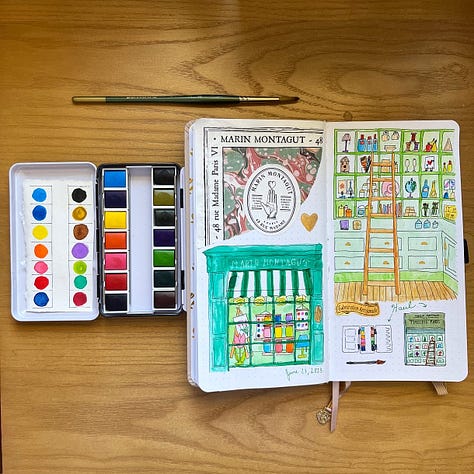
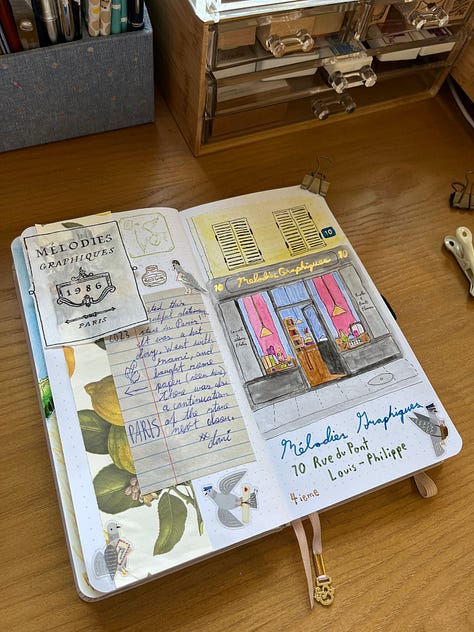
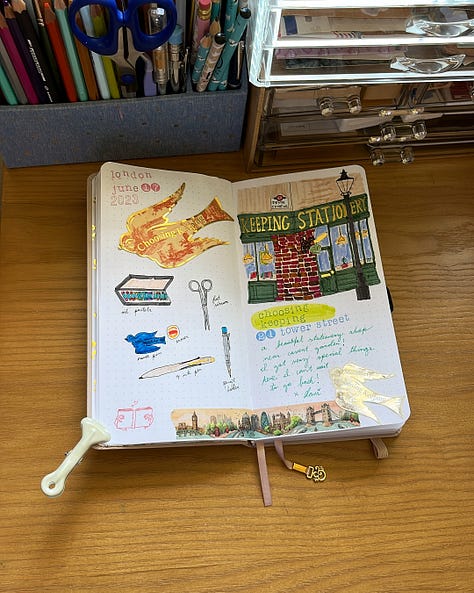
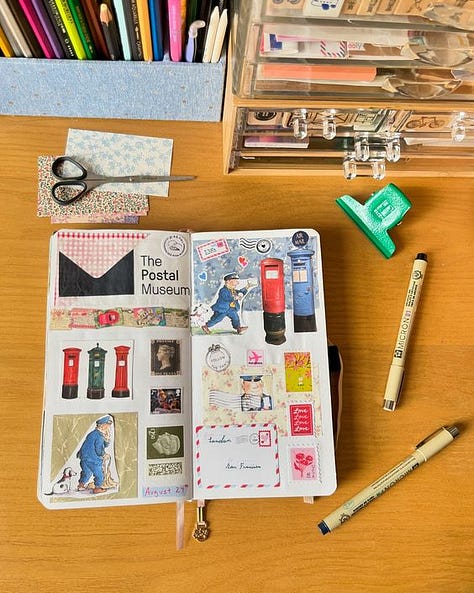
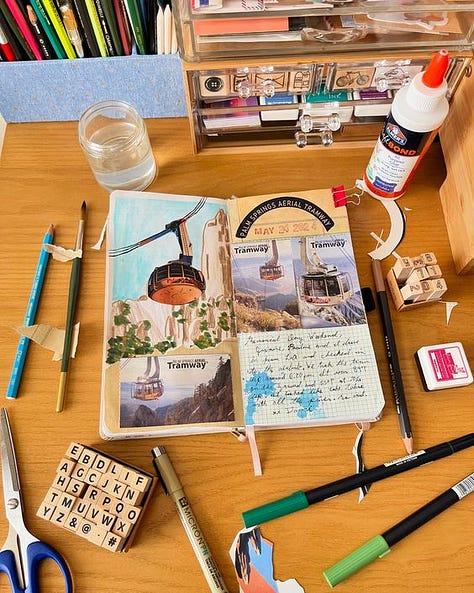

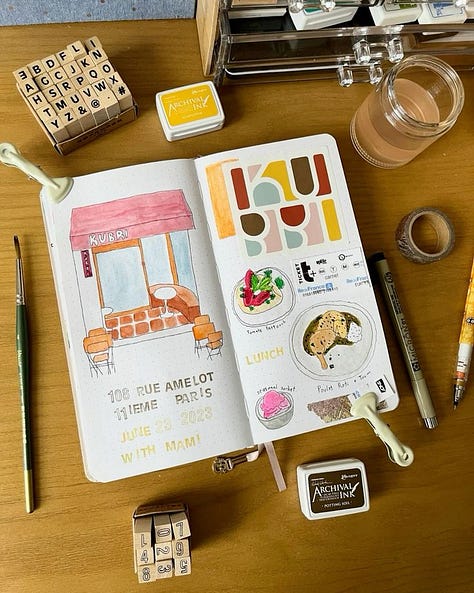
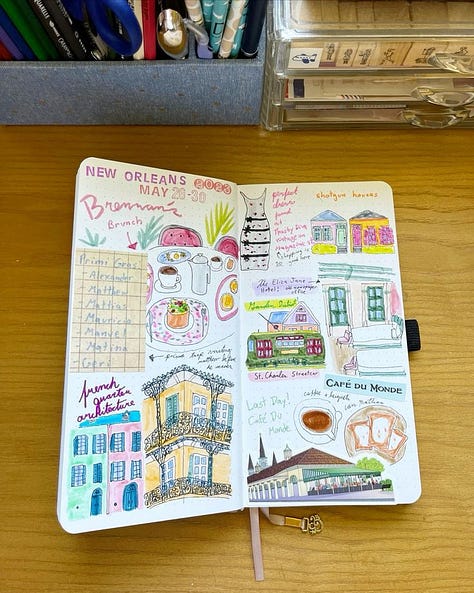
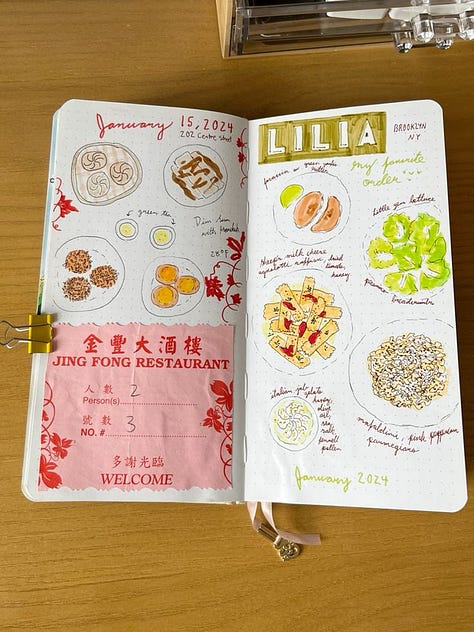
On keeping a Junk Journal
The only rule of Junk Journaling is: there are no rules! A Junk Journal is as unique to each person as their personal tastes, experiences, and perspectives. The clothing tags one person might throw away, another person may have a dedicated page for. Ski lift passes, concert tickets, maps, brochures, business cards can be saved and displayed in virtually limitless permutations.
My Junk Journal method is to collect ephemera while I travel, and when I get home, I build a page around those pieces in combination with sketching and writing. If a restaurant gives me a sticker with the check, I’ll typically draw the dishes we ate, and maybe the facade of the restaurant, with the sticker as both the inspiration and the pièce de résistance on the page. It’s essential to me that each spread include dates, times, places. I like for my junk journal to serve as a detailed archive of my travels—a handmade, physical record of places I’ve been and experiences I’ve had to look back on.
How do you document your life? Do you also suffer from the compulsion of saving little paper things? Did you also love the Dear America series of historical fiction novels for children?
Me, I’m people.
Remembering when I took French I and learned that the word for “memory” in French is souvenir.
A hundred people commented on said video to tell me receipts fade/are poisonous, so you don’t have to do it on this post! I’m good.
Source: Datacenters.com
One of you will comment “I live in Arizona, I live in North Carolina” okay but do you live inside the data center with your photos (or the idea of your photos).
‘This story is no longer available’: Instagram permanently deletes some photos (July 31, 2024) By Ramishah Maruf, CNN
The Desperation of the Instagram Photo Dump (September 11, 2024) by Kyle Chayka for The New Yorker
New York’s Hottest Club is the Criterion Closet van. You can read the article Waiting Hours for 3 Minutes in the Criterion Closet (Well, Van) (October 10, 2024) by Annie Aguiar for The New York Times here.
Personally very excited for this. A catalog revival! In 2024! The print renaissance is here.
Reminds me of this article about “The Luddite Club” founded by teens in NYC, by Alex Vadukul for The New York Times (December 15, 2022).
It is because of these books (formative literature!) I always imagine that someone will read my diary in 100 years. It gives me a bit of anxiety, but in truth, I love an audience, and I won’t be around to be embarrassed about it anyway. (Yes I know these books are fictional and written by grad students!!! Let me live my primary source dream!!)
This is very common. OR they could succumb to digital obsolescence which is something I think about a lot.
The 1873 patent is for a scrapbook with pages that only need water for the adhesive to activate. No more fumbling with glue! Twain used his scrapbooks to save and organize articles, cartoons, book reviews, etc. It is understood his scrapbook business was quite successful.
My mom used to be a scrapper hehe. She still has all these cool stamps!








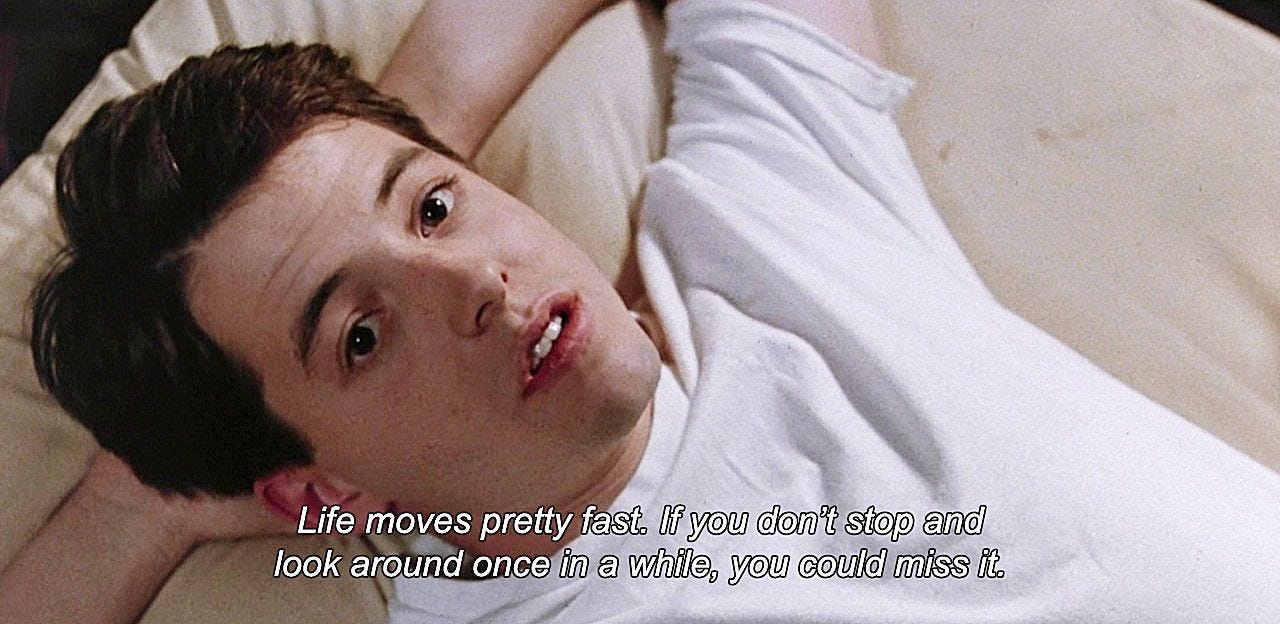
I used to save and collect all my photos in several shoe boxes. Along with all other types of tokens and memories. They would have looked like to junk to someone else, but each item served as a portal to a memory and in turn a story. And I think humans love to tell stories and it’s something that we find ways of creating, in order to do just that.
Currently I have a written journal and I doodle and add some stickers and a separate art journal for playing. I honestly find that being an adult (I turned 40 this year) is just rediscovering all the things I loved when I was 12.
As for the photos on my phone. I’m one of those who actually prints them. I have them as fridge magnets and dotted around the house and one of my favourite things to do is make an A1 size photo collage, so all the people and all the memories are smooshed together.
Btw I found you on TikTok and have only just discovered you over here. I’m so glad you share your creativity in multiple formats, I’m here for it all! 💕
That opossum in the trash is me and my junk journal